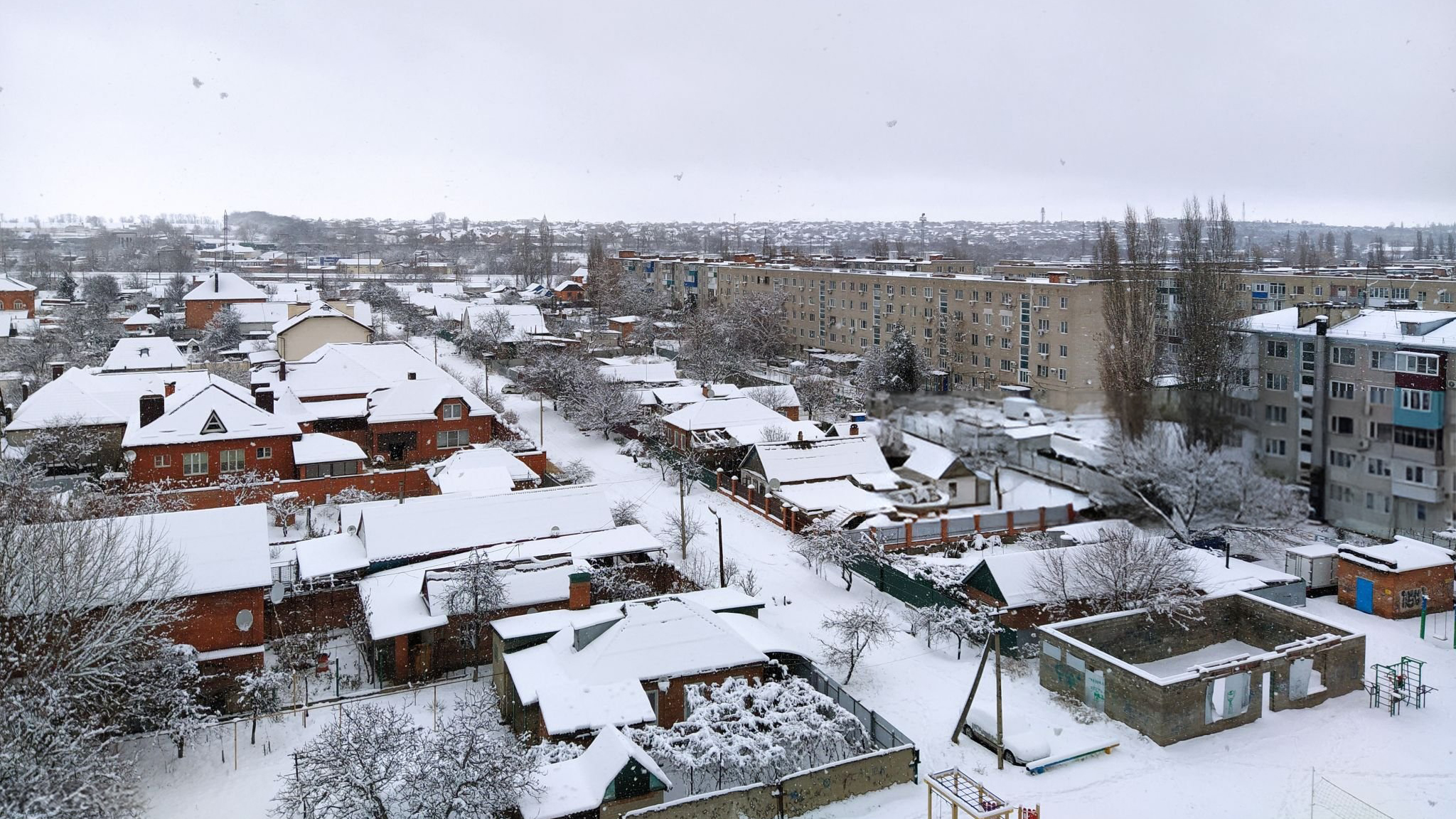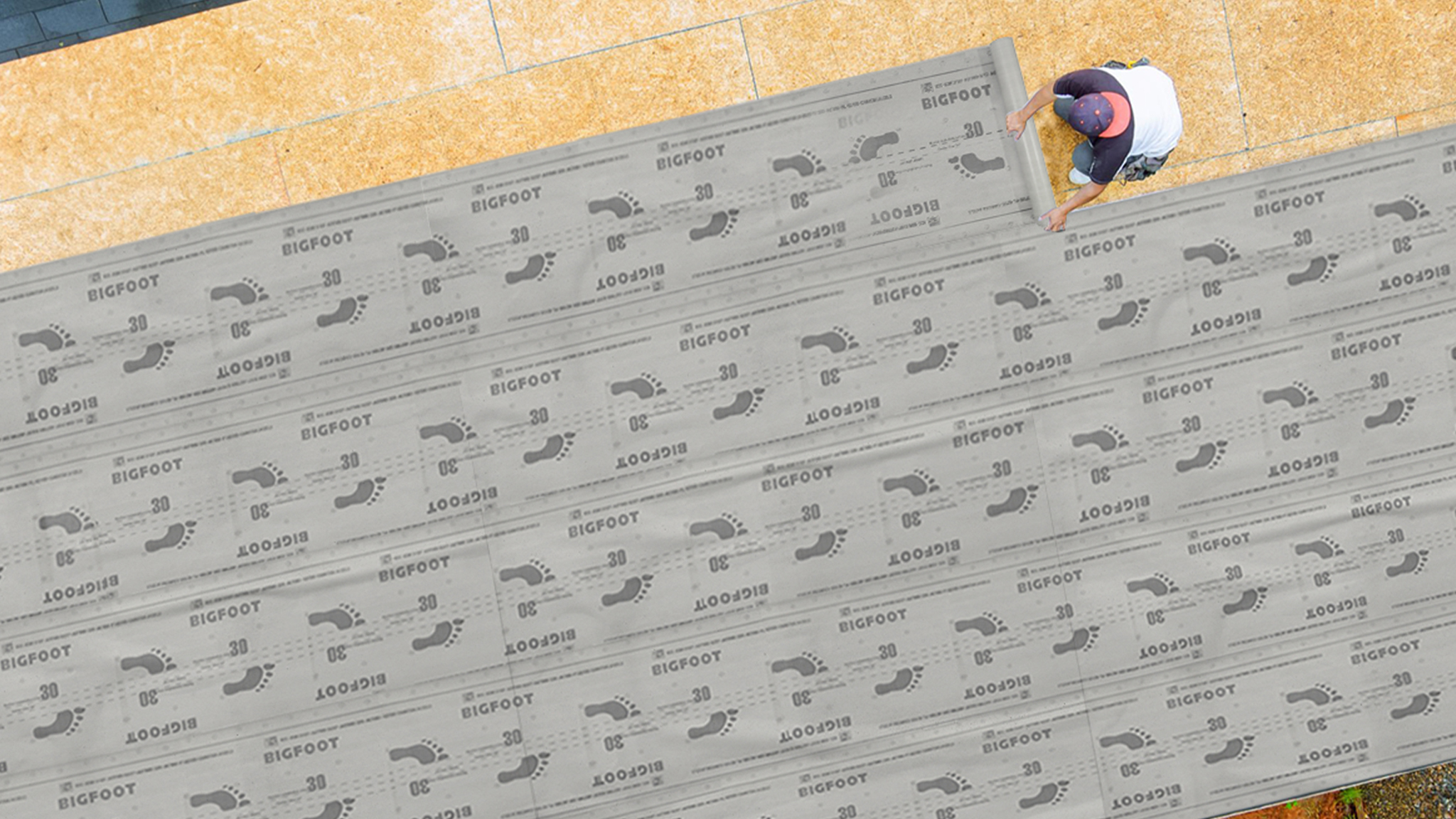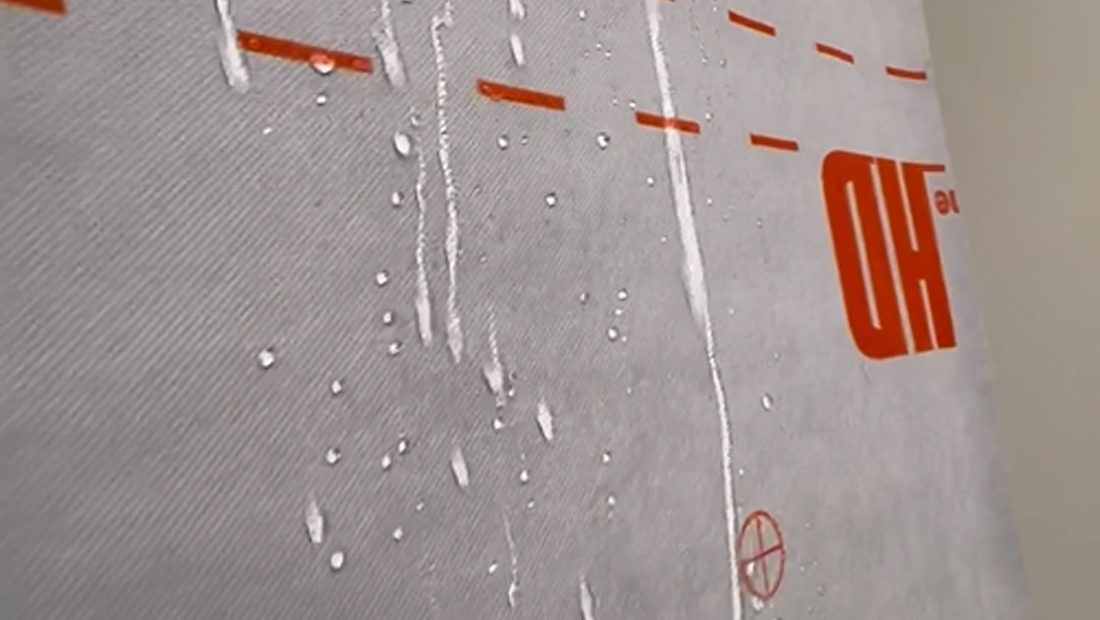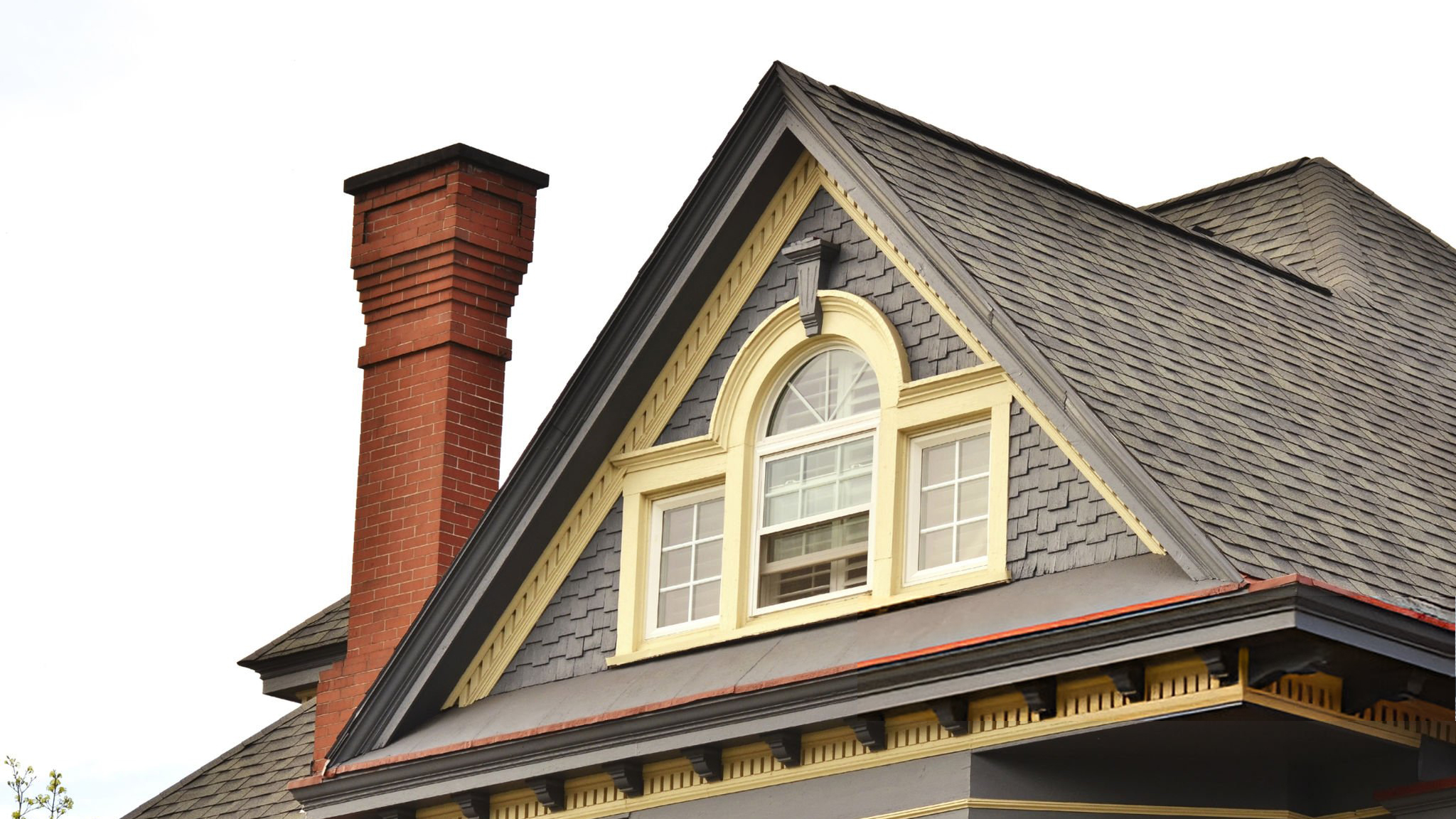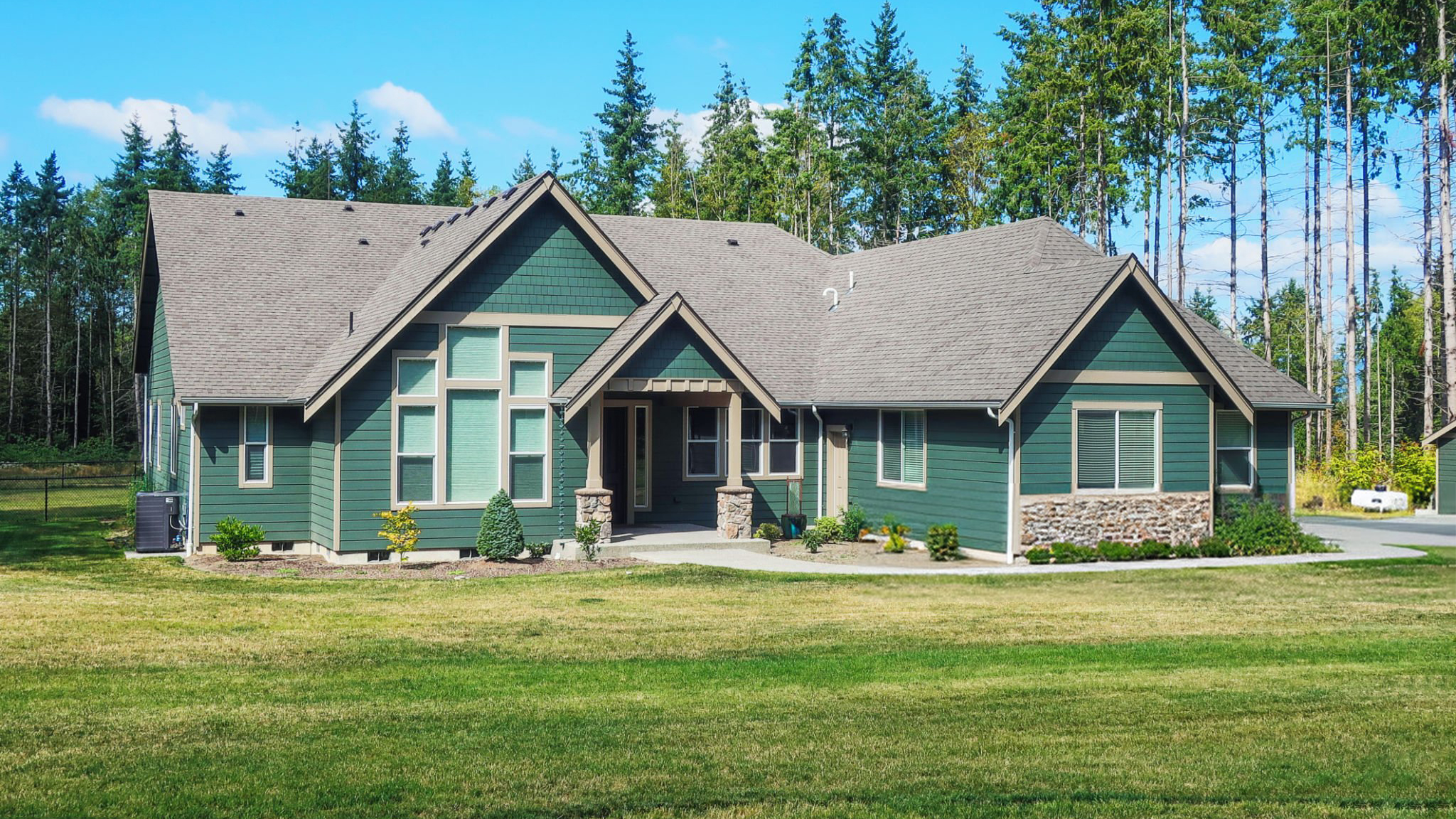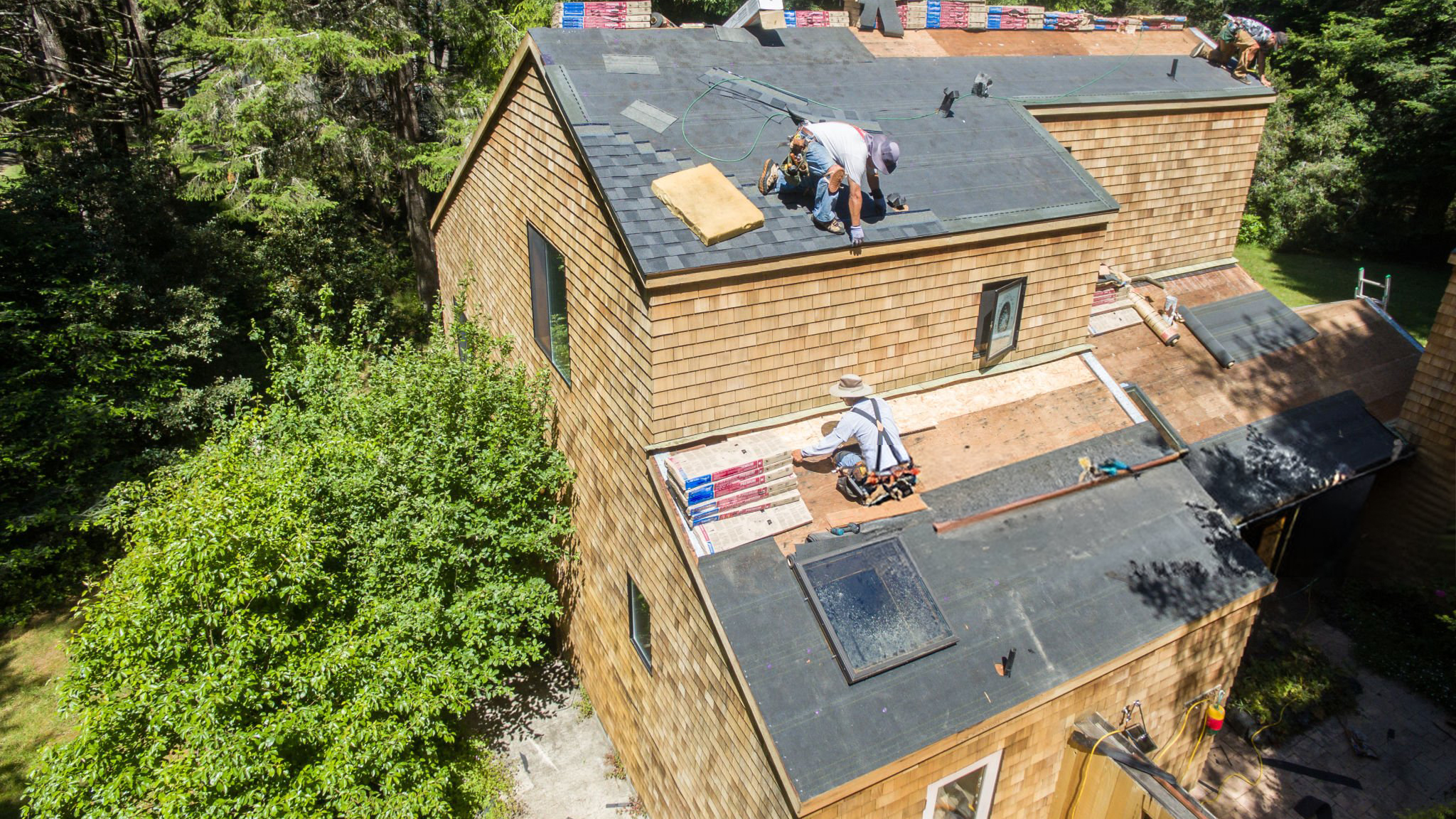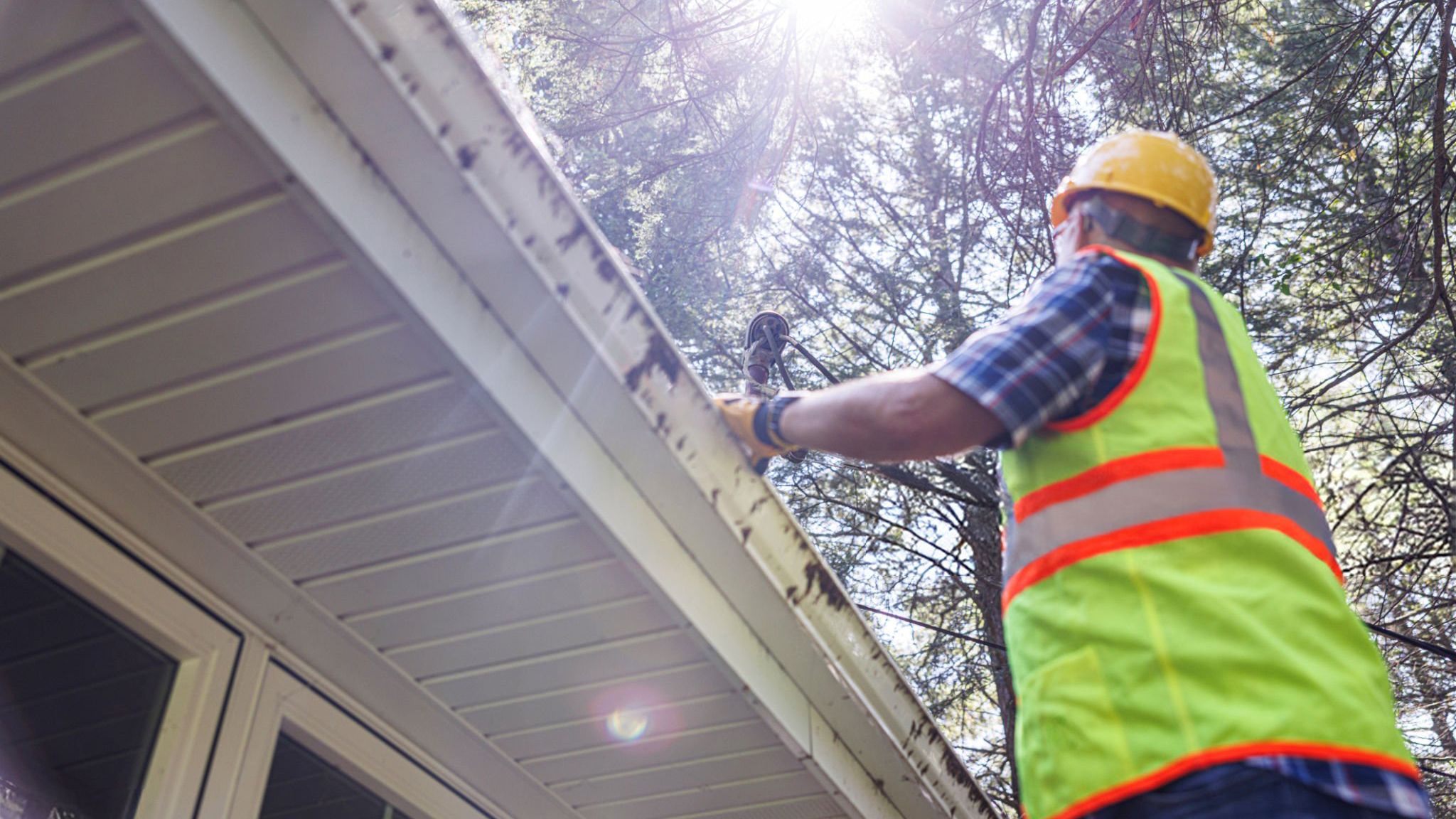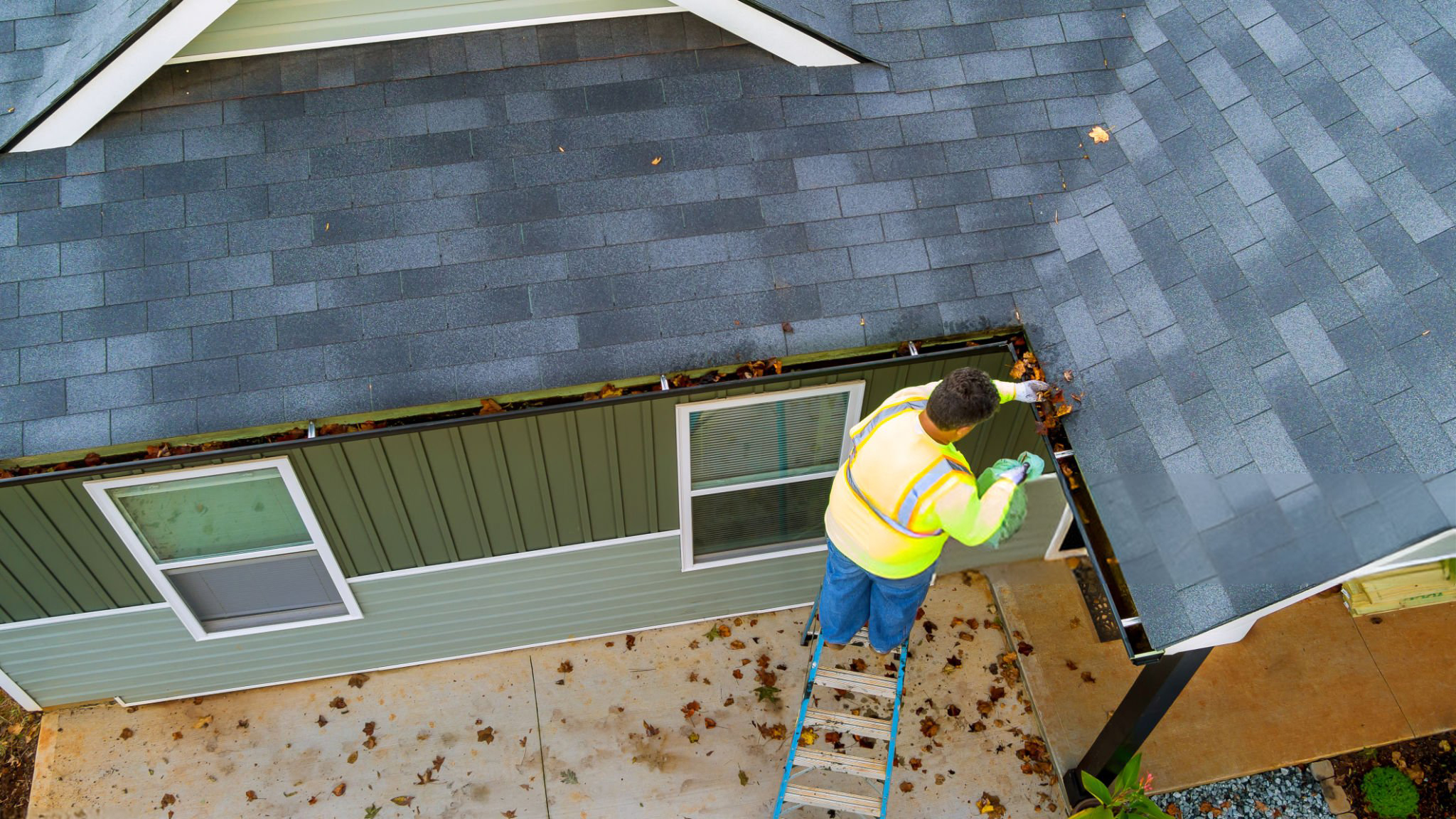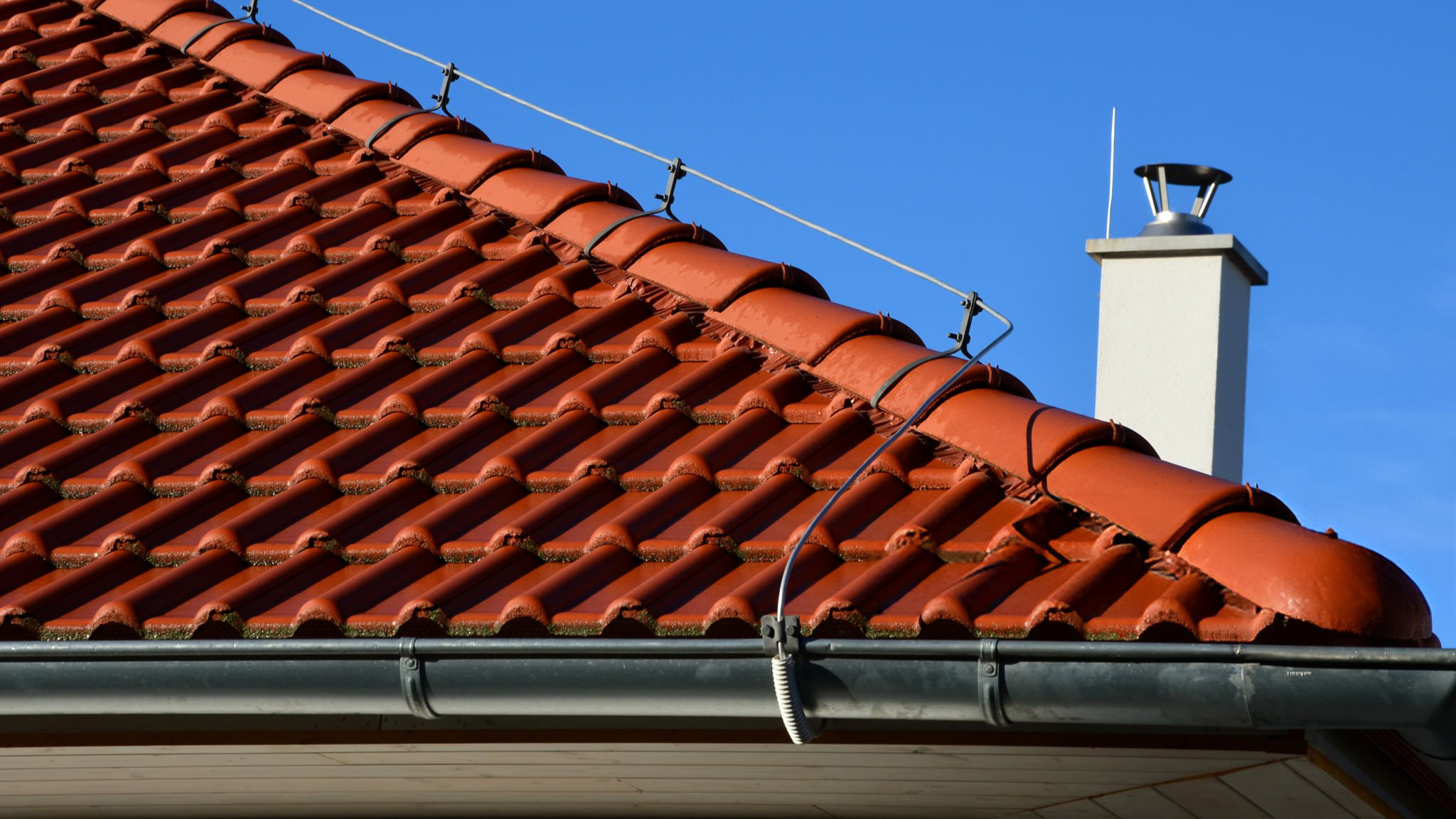The Importance of Roof Materials and How to Choose the Right One
In architectural design, the roof is considered the "guardian" of a house. It not only protects the building from rain, snow, wind, and other natural elements but also affects the overall aesthetics, comfort, and energy efficiency of the home. The choice of roof materials is a crucial aspect of home construction, as it influences the building's appearance, long-term maintenance, and directly impacts the safety and comfort of the residents.
1. Key Factors in Choosing Roof Materials
When selecting the right roof material, several key factors must be considered:
Climate Adaptability
The first consideration when choosing roofing materials is the climate of the area. Different climates have different demands on roof materials. In tropical regions, roofing materials need to provide good insulation to prevent high indoor temperatures. In colder regions, materials need to be durable and waterproof. Choosing materials that are adaptable to the local climate can extend the roof's lifespan and reduce damage from climate changes.
Durability and Maintenance
The roof is one of the most exposed parts of a building, and it faces prolonged exposure to wind, rain, sunlight, and temperature fluctuations. Therefore, the durability of roofing materials is crucial. Some materials may require regular maintenance, cleaning, or repairs, while others can last for decades with little upkeep. When selecting materials, it's essential to consider the maintenance needs and durability, especially for long-term investments in housing.
Aesthetic Appeal and Architectural Style
The roof is not only a functional component of a building but also an important factor in its overall appearance. Choosing the right roofing material should be in harmony with the overall architectural style of the house to provide both functional protection and visual enhancement. Whether the home follows a modern minimalist style or a more traditional country design, the roofing material should complement the overall aesthetic of the structure.
Energy Efficiency and Environmental Impact
Modern buildings increasingly focus on energy efficiency and environmental friendliness, and the choice of roofing material plays a vital role in this. Roofing materials with good insulation and UV protection can regulate indoor temperatures effectively, reducing the need for air conditioning or heating, thus helping families save on energy costs. Additionally, environmentally friendly materials, such as those that are recyclable, help reduce construction waste and lessen the environmental impact.
Budget and Cost-Effectiveness
Aside from the factors mentioned above, budget is another essential consideration when choosing roofing materials. Different materials come at different price points. Some may have a higher initial cost but lower long-term maintenance expenses, while others might be cheaper upfront but require more frequent maintenance or replacement. It’s crucial to balance the initial investment with the long-term costs to ensure the best value within your budget.
2. Essential Roof Material Performance Requirements
Regardless of the type of roofing material chosen, there are several essential performance requirements it must meet:
Waterproofing
The most basic function of a roof is to prevent water infiltration. A high-quality roof must have good waterproofing properties to ensure that, even during heavy storms or extreme weather, rainwater doesn’t penetrate the building and damage its interior.
Insulation and Heat Retention
Insulation is a critical feature of roofing materials, especially in hot or cold climates. The roof should have effective thermal resistance to minimize the impact of external temperature fluctuations on indoor temperatures, improving the comfort level inside the house and reducing the need for air conditioning or heating.
Wind Resistance
In areas prone to high winds, the roof's ability to withstand wind pressure is especially important. Roofing materials need to have good wind resistance to prevent them from being damaged or blown off by strong gusts.
3. The Process of Choosing Roof Materials
Choosing the right roofing material is not a quick decision and requires a comprehensive assessment of various factors. Here is a basic process to follow when selecting roof materials:
Assess Climate Conditions: Understand the local climate, including temperature, rainfall, and wind patterns. Choose roofing materials that are best suited to the climate to enhance the roof’s functionality and longevity.
Set a Budget: Determine a reasonable budget that accounts for both the initial cost of roofing materials and future maintenance expenses. Ensure that the material selected does not exceed the budget and provides good value over the long term.
Evaluate Architectural Style: The roof is an integral part of the house’s exterior design. Select roofing materials that complement the building's overall aesthetic, ensuring that they align with the intended style, whether modern or traditional.
Consider Long-Term Maintenance: Evaluate the maintenance needs of different materials. Some materials may require regular inspections, cleaning, or repairs, while others may be more durable and require less frequent maintenance, reducing overall costs.
Consult Professionals: It’s advisable to consult with professional architects or roofing contractors who can provide expert guidance based on the specific needs, climate conditions, and budget to help you make an informed decision.
4. Conclusion
The roof, as a crucial component of a building, is not only important for its aesthetics and functionality but also for long-term safety, energy efficiency, and cost-effectiveness. Understanding the various functions and performance requirements of roofing materials can help homeowners make more informed choices. Whether building a new home or renovating an existing roof, choosing the right materials will provide long-lasting protection and enhance the comfort and safety of the household.
2025-04-19
DETAIL

Roof Synthetic Underlayment and the Integration with MOUNTAIN BIGFOOT BARRIER: A New Choice for Modern Architecture
As building technology and materials continue to evolve, traditional roofing protection materials are gradually being replaced by high-performance synthetic underlayments. Synthetic underlayments not only provide excellent physical properties but also meet the growing environmental and energy-efficiency demands. In this development, MOUNTAIN BIGFOOT BARRIER, as an emerging roofing solution, is becoming the preferred choice for many construction projects. This article explores the transformation of the roofing industry, market trends, and future innovations through the integration of synthetic underlayments.
1. The Evolution of Synthetic Underlayment: From Traditional Materials to Modern Technology
Traditional roofing protection materials primarily include asphalt, metal shingles, and clay tiles. While these materials have been widely used over the past few decades, they come with disadvantages such as heavy weight, complex installation, and high maintenance costs. As environmental awareness increases and energy-efficiency requirements rise, synthetic materials have gradually replaced traditional materials.
The rise of synthetic underlayment marks a significant innovation in the building industry. From the early use of polyethylene underlayment to modern multi-functional composite underlayments, the evolution of roofing materials reflects not only enhanced physical properties but also a higher standard of environmental responsibility and energy-saving effectiveness. For instance, the use of PVC (Polyvinyl Chloride) and PP (Polypropylene) materials has enabled synthetic underlayments to offer superior durability, longer lifespans, and lower maintenance costs.
2. The Birth of MOUNTAIN BIGFOOT BARRIER Synthetic Underlayment
With the growing demand for high-performance materials in the roofing market, MOUNTAIN BIGFOOT BARRIER was born. This synthetic underlayment is specifically designed for extreme weather conditions, particularly in cold, high-altitude, and snow-prone areas, where its application prospects are promising.
The design of MOUNTAIN BIGFOOT BARRIER is inspired by a deep understanding of the natural environment. It combines innovative composite material technologies to provide multi-layered protection functions in one product. Compared to traditional materials, MOUNTAIN BIGFOOT BARRIER not only enhances roof protection but also reduces installation time and maintenance frequency, making it an ideal choice for modern construction projects.
3. The Demand for Synthetic Underlayment in Modern Architecture
As the effects of global climate change lead to more frequent extreme weather events, architects and engineers must consider how to improve the reliability and durability of roofing systems. From flooding and blizzards to high temperatures and droughts, different climates present varied demands on roofing materials. Synthetic underlayment, such as MOUNTAIN BIGFOOT BARRIER, was created to address these diverse weather conditions. Its emergence not only responds to market needs but also drives the development of building materials towards higher efficiency and intelligence.
4. From Structural Protection to Architectural Aesthetics: The Dual Role of Synthetic Underlayment
As the building industry places increasing importance on aesthetics, roofs must not only be durable and reliable but also align with the architectural vision of the project. The application of synthetic underlayment offers more possibilities in this regard. MOUNTAIN BIGFOOT BARRIER, for instance, is designed to integrate seamlessly with various architectural styles. Its surface design can be customized in terms of color and texture, allowing it to not only protect the roof but also complement the overall aesthetic of the building.
5. Innovation and the Future: The Evolution of Synthetic Underlayment
With continuous technological advancements, future roofing synthetic underlayments may become more intelligent and multifunctional. For example, underlayments that integrate solar panels, temperature-sensing systems, or self-cleaning functions may become a growing trend. As a leader in the industry, MOUNTAIN BIGFOOT BARRIER is expected to further innovate in these areas.
Additionally, as green building and sustainable development become more prominent, the environmental sustainability and recyclability of synthetic underlayments will be further enhanced. We may soon see more synthetic underlayments made from biodegradable materials, further reducing the environmental impact and pushing the entire construction industry towards a more sustainable future.
6. Conclusion: The Future of Roofing Technology
From the early use of asphalt shingles to the modern high-performance synthetic underlayments, roofing technology has come a long way. MOUNTAIN BIGFOOT BARRIER, as an innovative representative of synthetic underlayment, demonstrates how building materials can evolve to meet extreme weather conditions, energy efficiency, and aesthetic demands. With future technological innovations, roofing systems will become even more efficient, and the construction industry will move forward with greater sustainability.
By continuously integrating modern technology with environmental responsibility, synthetic underlayments will no longer be just a protective layer for roofs; they will become a vital component of a multi-functional, efficient, and intelligent building system. For architects, contractors, and end-users, choosing the right roofing underlayment will be one of the keys to success in future construction projects.
2025-04-18
DETAIL

Powerful Protection from the Ground Up – Choose High-Performance Roofing Underlayment
Your roof is not just the “top” of your building; it’s the first line of defense against the elements. Choosing the right roofing underlayment means adding lasting protection to your roofing system.
Why Choose Our Roofing Underlayment?
✅ Top-notch Waterproofing: Effectively blocks moisture from penetrating, preventing leaks and dampness, and protecting the roof structure from damage.
✅ Exceptional Tear Resistance: Reinforced fiber design ensures integrity even under high pressure, preventing tears during installation or exposure to harsh conditions.
✅ Slip-Resistant Design: Special surface textures provide strong friction, ensuring worker safety on wet or steep roofs.
✅ Weather-Resistant: Whether exposed to intense heat or freezing cold, our underlayment resists UV rays and weather changes, maintaining long-term stability.
✅ Lightweight & Efficient Installation: Easy to handle and install, reducing labor intensity and improving overall efficiency on-site.
Add an invisible layer of protection to your roof, enhancing its durability, stability, and safety. Whether residential or commercial, our roofing underlayment provides the ideal solution. Choose high-performance underlayment to fundamentally protect your roof's longevity and safety!
2025-04-18
DETAIL

The Evolution of Synthetic Roofing Underlayment: From Market Demands to Technological Innovation
The application of synthetic roofing underlayment in the construction industry is not a coincidence but a result of the evolving demands in the market. From the initial basic requirements of waterproofing and durability, to the current complex functions of integration, intelligence, and environmental friendliness, the development of synthetic roofing underlayment deeply reflects the construction industry’s continuous pursuit of innovation, performance, and sustainability. This article explores the evolution of synthetic roofing underlayment from the perspectives of market demand, technological innovation, and future development directions.
1. The Diversification of Market Demand
The emergence and rapid development of synthetic roofing underlayment is a direct response to the increasingly diverse demands for roofing functions in the market. As the construction industry continues to pursue higher-performance building materials, roofing underlayment has evolved from a simple waterproofing layer to a composite system with many added functions.
Waterproofing Needs: Initially, the design of roofing underlayment focused primarily on waterproofing, particularly in regions with variable climates and frequent rainfall. Early roofing materials, although able to meet basic waterproofing needs, were prone to aging, cracking, and other issues over time. Synthetic materials such as polyethylene (PE) and polyvinyl chloride (PVC) quickly became popular in the construction industry due to their excellent waterproofing properties.
Weather Resistance and Longevity: As building structures and functions became more complex, the demand for roofing underlayment expanded to include longer-lasting weather resistance and enhanced adaptability. Synthetic roofing underlayment, with its UV resistance and anti-aging properties, gradually replaced traditional materials and became the preferred long-term solution. Especially in regions with strong sunlight or extreme temperature fluctuations, synthetic materials effectively withstand harsh weather, extending the lifespan of roofs.
Energy Efficiency and Environmental Needs: With the global energy crisis and growing environmental awareness, energy-efficient building practices became central to design. Roofing no longer served just as a protective layer but was also required to provide insulation and reflect sunlight, reducing energy consumption within the building. Synthetic roofing underlayment’s multi-layered structure and reflective materials not only help improve roof insulation but also reduce the internal temperature of buildings, minimizing air conditioning loads and thus achieving energy savings.
2. Technological Innovation Driving Progress
From waterproof membranes to multi-functional and intelligent roofing protection systems, technological advancements in synthetic roofing underlayment have significantly enhanced its performance. These innovations not only help meet the increasingly complex functional demands but also promote the diversification and efficiency of roofing materials.
The Emergence of Composite Materials: In the late 20th century, the use of composite materials opened up new possibilities for roofing underlayment design. By combining different types of synthetic materials, roofing underlayment can integrate multiple functions within a single system. For example, combining polyethylene and polyvinyl chloride enhances both waterproofing and anti-aging properties, making the material suitable for more complex usage environments.
Self-Cleaning and Anti-Contamination Technology: One of the major innovations in modern roofing underlayment is the application of self-cleaning technology. Through nanocoatings or other surface treatments, synthetic roofing underlayment can prevent dirt, dust, and other pollutants from adhering to the surface, keeping the roof clean. This not only enhances the roof's aesthetic appeal but also reduces maintenance costs and extends the material’s lifespan.
The Rise of Smart Design: With the development of smart building systems, synthetic roofing underlayment is also transitioning towards intelligence. In the future, smart roofing underlayment could automatically adjust temperature and humidity, or even self-repair when damaged. These technological advancements make roofing underlayment more comprehensive in functionality and more responsive to environmental changes in buildings.
3. Challenges and Solutions
Despite significant progress in both technology and performance, the widespread application of synthetic roofing underlayment still faces several challenges. Balancing innovation with cost reduction, enhancing sustainability, and improving recyclability remain key issues in the industry.
Cost and Accessibility: While synthetic roofing underlayment offers clear advantages over traditional roofing materials, the higher initial costs are still a barrier for many projects. To reduce costs, many manufacturers are focusing on optimizing production processes to minimize material waste and driving large-scale production to achieve cost reductions.
Environmental Friendliness and Recyclability: As green building and sustainability become more prominent, the environmental impact and recyclability of synthetic roofing underlayment are gaining increased attention. While many synthetic materials have a long service life, the issue of recycling them at the end of their lifecycle is still a challenge. Developing recyclable materials and improving recycling technologies will be essential for future development.
Adapting to Extreme Climatic Conditions: As climate change brings about more frequent extreme weather events, the adaptability of roofing underlayment becomes increasingly important. For example, in freezing climates, roofing underlayment needs to be resistant to freeze-thaw cycles, while in hot, dry areas, the material must withstand higher temperatures. Material science and structural design will need to continue to innovate to meet these challenges.
4. The Future Trends of Synthetic Roofing Underlayment
The future of synthetic roofing underlayment will focus on intelligence, integration, and sustainability. With the construction industry’s increasing demand for energy-efficient and environmentally friendly buildings, synthetic roofing underlayment will play a more crucial role in shaping the future of building materials.
Integrated and Multi-functional Roofs: Future synthetic roofing underlayment will not only serve as a protective layer but will evolve into a multi-functional integrated system. Roof systems that combine solar power, rainwater harvesting, air purification, and other features will become more prevalent. These roofs not only protect the building from external environmental damage but can also provide energy, enhancing the building's self-sufficiency.
Smart and Adaptive Technologies: As building technologies continue to evolve, so will the intelligence of synthetic roofing underlayment. Future roofing materials may not only adjust temperature and humidity but also monitor the roof's health in real time through sensors, providing early warnings for potential problems and lowering maintenance costs.
Green Building and Sustainability: With increasing attention to global sustainability, the environmental performance and energy efficiency of synthetic roofing underlayment will become more critical. Future roofing materials will focus more on the use of recyclable materials and environmentally friendly production processes, in alignment with increasingly strict green building standards.
Conclusion
The evolution of synthetic roofing underlayment reflects the growing demands for performance, functionality, and sustainability in the construction industry. From a simple waterproofing material to today’s multi-functional, intelligent roofing systems, synthetic roofing underlayment has become an indispensable part of modern construction. With ongoing technological advancements and the increasing diversification of market needs, synthetic roofing underlayment will continue to play a vital role in the future of buildings, driving the construction industry toward smarter, more sustainable, and energy-efficient solutions.
2025-04-17
DETAIL

The Evolution of Roof Synthetic Underlayment and Innovation in Architectural Design
Over the past few decades, building materials have undergone significant technological advancements, especially in the field of roofing design. Roof synthetic underlayment, as part of this transformation, has gradually become an indispensable element in modern architecture. Its development reflects not only the progress of material science but also the innovative thinking within the architectural industry in response to diverse demands.
From the initial simple waterproof layers to the multifunctional synthetic underlayment we have today, the design and functionality of roofs have undergone profound changes. Traditional roofs were typically made of basic materials such as tiles, wood, or metal, with a singular focus on waterproofing and insulation. However, as architectural design concepts expanded, roofs began to take on multiple roles—not just as a shelter, but also contributing to energy efficiency, noise insulation, wind resistance, and more. The synthetic underlayment emerged within this context, meeting the modern architectural demand for both aesthetics and functionality, while also driving the diversification of roof functions.
The introduction of synthetic underlayment, especially in environments with complex climate conditions, has provided architects with greater design flexibility. Its flexibility and adaptability allow designers to pair roof shapes and functions in ways that were previously limited by traditional materials. The versatility of synthetic underlayment has made it an essential tool in high-performance architectural design, meeting not only the basic requirements of a building but also enhancing its adaptability to different environmental conditions.
The technological advancements in roof synthetic underlayment are not limited to improvements in the material itself. With the development of digital design and smart building technologies, synthetic underlayment has gradually become part of smart architecture. In some advanced building projects, synthetic underlayment is even integrated into smart monitoring systems to track parameters like roof temperature, humidity, or air quality, enabling the building to automatically adjust in response to changing conditions to optimize energy use and enhance occupant comfort.
Additionally, as architectural aesthetics and environmental impact gain more attention, the appearance and texture of roof synthetic underlayment are continuously evolving. Whether it's the sleek, modern visual appeal or its harmonious integration with the natural environment, the diversity of synthetic underlayment materials allows the roof to become a prominent feature of the overall architectural design. Many modern architects are increasingly using these materials to break away from the traditional roof shapes, making the roof a standout element of the building.
The evolution of this material reflects the shift in the architectural industry from "single-function" to "comprehensive solutions." It is no longer just a part of the roof but a critical component of the entire building system. With growing attention to green buildings and sustainable design, synthetic underlayment will continue to drive innovation in both roof functionality and aesthetics in future architectural projects.
Looking ahead, with ongoing research and technological breakthroughs, roof synthetic underlayment may expand beyond its current applications, leading to new uses that further enhance the interaction between buildings and the environment. From this perspective, synthetic underlayment is not just an innovation in building materials but a significant breakthrough in architectural thinking.
2025-04-16
DETAIL

Synthetic Roof Underlayment: From Technological Innovation to Future Development
In the rapid development of modern building technology, synthetic roof underlayment has increasingly become a key material for enhancing the performance of roofing systems. Although roof underlayment is often considered an auxiliary building material, its role in roofing systems is multifaceted and far-reaching. With technological advancements, synthetic roof underlayment has seen continuous innovation in terms of materials, functionality, and environmental sustainability, driving the development of the construction industry and providing more possibilities for future roof designs.
The technological evolution of synthetic roof underlayment reflects the rapid progress in materials science. From the initial simple waterproof layers to today’s high-performance synthetic underlayments with multiple functions, the innovations behind these materials are not just manufacturing process improvements but also a deep understanding of building environmental needs. Modern synthetic roof underlayments are typically made from synthetic polymers or composite materials, which perform significantly better than traditional materials in areas such as UV resistance, chemical corrosion resistance, and temperature tolerance. These technological advancements allow synthetic roof underlayment to provide sustained protection in harsh weather conditions and extend the lifespan of the roof.
At the same time, the design of synthetic roof underlayment is gradually evolving toward more intelligent and integrated solutions. For example, some high-end synthetic underlayment materials are now capable of integrating with a building’s energy systems to optimize roof thermal management and improve the building’s overall energy efficiency. This innovation has been applied not only in commercial buildings but is gradually penetrating residential architecture as well. With the help of intelligent roofing systems, synthetic roof underlayment can monitor the roof’s condition in real-time, alerting to potential damage or leaks, thereby improving the building’s safety and maintenance efficiency.
In the future, the development of synthetic roof underlayment may further incorporate cutting-edge technologies. For example, the application of nanotechnology could enable underlayment to possess self-healing capabilities and enhanced protective performance. Imagine a roof underlayment that can automatically repair small cracks or damage, not only extending the roof’s service life but also significantly reducing maintenance costs and frequency. Additionally, with the growing focus on sustainability and green building practices in the construction industry, the production processes and material choices for synthetic roof underlayment will increasingly prioritize environmental friendliness and resource recycling. This shift not only responds to environmental regulations but also meets consumer demand for healthier buildings and green products.
The multifunctionality of synthetic roof underlayment is also becoming increasingly recognized by architects and engineers. In the past, the role of underlayment was mainly concentrated on waterproofing and insulation, but today, its function has expanded into broader areas. For instance, synthetic roof underlayment can help reduce noise pollution from the roof, especially in areas undergoing rapid urbanization. The soundproofing properties of synthetic underlayment can effectively reduce the penetration of external noise, improving indoor comfort. This feature is particularly useful in highly trafficked urban areas or buildings located near industrial zones.
Furthermore, synthetic roof underlayment has made breakthroughs in enhancing the aesthetic appeal of buildings. As materials technology advances, modern synthetic underlayment can offer more design options, not only meeting functional requirements but also complementing the building’s exterior. Through innovations in color, texture, and surface coatings, synthetic roof underlayment can help architects achieve more personalized and diverse roof designs. This provides greater flexibility in the design of modern building facades and enhances the overall visual effect of the building.
The future development of synthetic roof underlayment is also closely linked to the digital transformation of the global construction industry. With the widespread use of technologies such as Building Information Modeling (BIM), the production, design, installation, and even maintenance of synthetic roof underlayment can become more precise and efficient. BIM technology allows designers to accurately simulate every component of the roofing system, including the selection of underlayment materials and performance evaluation, thus optimizing the overall roof design. Through digital technologies, the design and installation of underlayment will become more precise and intelligent, further improving the overall performance and safety of the building.
In conclusion, synthetic roof underlayment is not just a simple building material; it has evolved into a highly versatile component of roofing systems, offering multiple functions such as waterproofing, insulation, soundproofing, and UV protection. As material science and building technologies continue to advance, future synthetic roof underlayment will continue to play an important role in intelligent, sustainable, and aesthetic design. With the maturation of these technologies, synthetic roof underlayment is expected to play an increasingly critical role in the global construction market, driving the industry towards greater efficiency, sustainability, and intelligence.
2025-04-12
DETAIL

How to Choose and Use the "Invisible Shield" for Your Roof?
Is your roof facing these issues? Water leaking through the gaps between roof tiles during rain, condensation on the ceiling in winter, or
worrying about tiles being blown off during strong winds? All these problems are related to a layer of protection you can't see—the
synthetic roof underlayment. It may not be as noticeable as the tiles, but it quietly takes on the important tasks of waterproofing,
insulation, and wind resistance. Today, let’s talk about how this "shield" works and how you can choose and use it for your roof.
The Core Functions of Roof Underlayment: The "Invisible Guardian
Simply put, synthetic roof underlayment is a flexible material placed between the roof structure and the tiles (or metal panels, concrete). It
mainly does three things:
When rainwater leaks through the gaps between roof tiles, the underlayment acts like a "waterproof membrane," blocking the water and
guiding it to the drainage system, preventing it from seeping into the roof interior (like the ceiling or insulation). Especially in tricky areas
like roof corners, skylights, and chimneys, the underlayment can flex and cover the gaps that tiles fail to cover.
In summer, it reflects part of the solar heat, reducing the temperature inside the house; in winter, it insulates the interior by preventing heat
loss through the roof and preventing condensation (water droplets formed when warm indoor air meets cold roof surfaces) from damaging
the structure. During strong winds, the underlayment helps grip the tiles or the roof structure through friction, reducing the risk of the tiles
being blown off. In the case of hail, it acts like a "cushion" that absorbs the impact, protecting the roof from damage.
How to Choose the Right Underlayment? Consider These Three Key Scenarios
Choose Based on Roof "Shape": Flat Roof vs. Sloped Roof
Flat Roof (e.g., top-floor platforms): Prone to water accumulation, so choose materials that are waterproof and resistant to aging,
like high-density polyethylene (similar to thick plastic bags but more durable), which can withstand being submerged in water for long
periods.
Sloped Roof (e.g., tile roof): Pay attention to whether the surface of the underlayment is "rough enough." If it’s too smooth, the tiles
may slip. It’s better to choose a textured material (like an anti-slip mat) to increase friction.
Choose Based on Climate: Rainy South vs. Cold North vs. Windy Coastal Areas
South (humid, rainy): Choose underlayment with a "water-repellent coating" (similar to the surface of a lotus leaf, where rainwater
doesn’t stay) and an internal structure that is "breathable," allowing moisture from inside the roof to escape, preventing mold growth.
North (cold): The underlayment needs to be "soft" enough to resist cracking in low temperatures, like rubber gloves in winter that
remain flexible. Otherwise, it will crack when frozen, and its waterproofing will fail.
Coastal/Windy Areas (high salt content): The material should be corrosion-resistant (salt accelerates aging). It’s best to choose one with
UV-resistant coating, so it won’t deteriorate after years of sun and wind exposure.
Choose Based on Roof "Material": Tile vs. Metal vs. Concrete
Tile Roof: The underlayment needs to be slightly flexible to conform to the curves of the tiles while also being tear-resistant (so it won’t
tear if stepped on during tile installation).
Metal Roof: Metal expands and contracts with temperature changes, so the underlayment should have "elasticity" to move with the metal
without cracking. Otherwise, temperature fluctuations can cause it to tear.
Concrete Roof: Focus on "puncture resistance." For example, when workers drop tools on the roof during construction, the underlayment
could be punctured, so choose one with a "reinforced layer" (such as fabric with a grid embedded for better puncture resistance).
Installation and Maintenance: These Tips Will Make It Last Longer and Save You Trouble
Key Installation Tips
Ensure the base is flat: If the roof base is uneven, the underlayment will have wrinkles, which can crack over time and allow water to leak in.
So, make sure to level the roof before installation.
Seal the seams properly: The underlayment is installed in sections, and the seams must be sealed with heat-welding (like fusing plastic) or
special adhesive tape. Never leave gaps.
Fixing Method Based on Roof Type: On sloped roofs, nails are commonly used (make sure to use nails with washers to prevent tearing the
underlayment). On flat roofs, adhesive or heavy objects (like concrete blocks) are often used to prevent the underlayment from being blown
away.
Regularly check the tiles: Broken tiles can damage the underlayment, so inspect your roof annually and repair any cracks promptly.
Avoid piling things on the roof: Heavy objects on the underlayment for long periods can cause localized wear, especially on flat roofs.
Avoid placing flower pots or other objects on the roof.
What to do if water leaks?: If water leaks indoors, first check the roof surface for visible damage, then check areas like skylights and
downspouts—these areas are most prone to leaks if the underlayment was not installed properly.
How to Choose the Right Underlayment? Keep These Three "Checks" in Mind
Check the "Thickness": Thicker is not always better! For general home use, a thickness of 1-2mm is sufficient. Too thick a material may not
conform well to the roof shape and can increase costs.
Check the "Flexibility": Take a small sample and bend it. If it recovers without cracks when you release it, it indicates the material will remain
flexible at low temperatures and won’t become brittle.
Check for "Certification": A reputable product will have national standards (e.g., GB/T 23457) or international certifications (e.g., ASTM),
especially a "weather resistance" test report, which tells you how long the underlayment will last before aging.
Conclusion: Don’t Let Your Roof "Work Sick," Choosing the Right Underlayment Matters
Although synthetic roof underlayment is invisible, it plays a crucial role in protecting your home. If you choose the right one, it can help you
block out rainwater, save on repair costs, and extend your roof's lifespan by more than ten years. Next time you’re renovating or replacing
your roof, remember to ask your contractor: "Which underlayment are we using? Is it suitable for our climate and roof type?" Pay attention
to the unseen details, and your home will be safer and more comfortable.
2025-04-11
DETAIL

Synthetic Roof Underlayment: An Indispensable Protective Layer in Modern Architecture
Synthetic roof underlayment has become an increasingly important component of modern building roof systems, gaining widespread
recognition among architects, contractors, and property owners. It plays a crucial role not only in protecting the roof physically but also
in enhancing the performance, durability, and long-term maintenance cost of the roof system. As the construction industry places greater
emphasis on sustainability and environmental concerns, the application of synthetic roof underlayment has expanded, evolving from merely
an additional protective layer to an essential factor for improving roof performance and reducing maintenance costs.
Key Role in Roof Protection
The roof system is directly exposed to the elements. Whether it’s intense ultraviolet radiation, heavy rainfall, or drastic temperature
fluctuations, the roof needs to exhibit exceptional durability. Synthetic roof underlayment is designed precisely to address these needs.
It not only offers excellent waterproofing but also helps regulate temperature, protecting the roof surface from the harsh impacts of the
environment.
Furthermore, synthetic roof underlayment possesses strong UV resistance, which helps to prevent material degradation and aging caused
by prolonged exposure to sunlight. Traditional roofing materials are prone to cracking and degradation under intense UV rays, which can
lead to reduced waterproofing and even leakage. Synthetic underlayment, made from UV-resistant synthetic materials, helps to delay this
process and ensures the roof’s long-term stability.
Enhancing Overall Roof System Performance
Synthetic roof underlayment offers significant advantages in protection, but it also plays an important role in improving the overall
performance of the roof system. First, the flexibility and elasticity of synthetic materials allow the underlayment to provide more uniform
support. This is especially important for roofing materials that are more susceptible to environmental changes, such as metal or membrane
roofs. Synthetic underlayment can effectively prevent roof materials from warping or cracking due to thermal expansion and contraction,
reducing the risk of material damage.
In addition, synthetic roof underlayment contributes to both thermal insulation and soundproofing. With increasing energy efficiency
demands in buildings, roof insulation has become particularly important. Due to its unique structure and material properties, synthetic
underlayment can improve the roof’s thermal performance, reducing the load on air conditioning during summer months and thus
lowering energy consumption. For buildings where soundproofing is crucial, such as commercial offices or residential homes, synthetic
underlayment effectively reduces the transmission of external noise, creating a quieter indoor environment.
Sustainability and Environmental Benefits
As environmental awareness grows, the construction industry is increasingly favoring sustainable, eco-friendly building materials. In this
context, the environmental properties of synthetic roof underlayment are of particular importance. Many synthetic roof underlayments
are made from recycled materials or are produced with low-carbon processes, aligning with modern green building practices and helping
to reduce the carbon footprint of the construction industry.
Moreover, the recyclability of synthetic roof underlayment makes it a material that aligns with the principles of a circular economy. Once its
service life is over, synthetic roof underlayment can be recycled and reused, thus reducing resource waste and environmental pollution. In
some high-end and green building projects, the use of eco-friendly synthetic roof underlayment has become a growing trend.
Long-Term Cost Efficiency
Although synthetic roof underlayment may require an initial investment, its long-term cost benefits are clear. First, the high durability and
UV resistance of synthetic underlayment significantly reduce the frequency of roof maintenance and replacements. Compared to traditional
underlayment materials, synthetic roof underlayment has a lower maintenance cost in extreme weather conditions and over extended periods,
minimizing expensive repairs caused by roof damage.
Additionally, due to its excellent waterproofing and insulation properties, synthetic roof underlayment can reduce energy waste caused by
leaks or temperature fluctuations. For instance, in colder climates, the roof's improved insulation can lower heating requirements, while in
hot climates, the enhanced waterproofing and thermal properties can reduce air conditioning costs, leading to energy savings and reduced
long-term operational costs.
Conclusion
As a modern building material, synthetic roof underlayment is becoming an indispensable part of roof systems due to its exceptional
performance, environmental benefits, and adaptability. As the construction industry continues to emphasize sustainability and long-term
efficiency, the use of synthetic roof underlayment will become more widespread. It not only improves the durability and functionality of
roof systems but also supports the green development goals of the building industry. In the future, synthetic roof underlayment will
continue to play an irreplaceable role in architectural design, becoming a core element of modern roofing systems.
2025-04-10
DETAIL

The Key Role of Roofing Synthetic Underlayment in Roofing Projects
In roofing projects, the use of synthetic underlayment is often overlooked, but it is an essential part of the roofing system. It plays a crucial
role in protecting the roof structure, improving overall performance, and extending the roof’s lifespan. This article will explore the role of
synthetic underlayment in roofing construction, its applications, and how it can affect the challenges encountered during the installation
process.
1. The Function of Synthetic Underlayment in Roofing Construction
Synthetic underlayment is primarily used to prevent water infiltration, protect the roof structure, and provide thermal insulation. However,
during the construction process, its role becomes even more significant. Here are a few of the key functions of synthetic underlayment in
roofing construction:
Waterproofing
One of the most important considerations in roofing construction is effectively preventing water infiltration. Whether constructing a new
roof or performing a renovation, water infiltration can significantly damage roof materials and lead to structural corrosion. Synthetic
underlayment provides an additional layer of protection to the roof, preventing rain, melting snow, and moisture from penetrating the
roof structure. Its waterproofing capabilities not only enhance the roof’s protective capacity but also reduce maintenance and repair costs.
Improving Construction Efficiency
The design and installation of synthetic underlayment are typically simple and straightforward, which plays a key role in accelerating the
construction process. Many synthetic underlayment materials are self-adhesive or lightweight, allowing construction workers to install
them quickly, without the need for extensive tools or time. For large-scale roofing projects, the use of synthetic underlayment can greatly
improve construction efficiency and reduce project timelines.
Preventing Structural Damage
Roof structures are often exposed to external environmental factors during construction, such as wind, rain, and temperature fluctuations.
Synthetic underlayment provides a protective layer that minimizes the negative effects of these factors on the roof. It helps prevent exposure
of the roof structure to unstable weather conditions, reducing the risk of damage during construction.
2. Installation Requirements for Synthetic Underlayment
Although installing synthetic underlayment is typically straightforward, it’s important to follow certain installation requirements to ensure
it performs at its best. Below are some common installation considerations:
Preparing the Roof Surface
Before installing underlayment, it is essential to clean and prepare the roof surface. Construction workers should ensure the roof is free
from debris, dust, grease, moisture, or any other substances that could affect the adhesion of the underlayment. Proper surface
preparation ensures the underlayment is firmly bonded to the roof, delivering the best protective performance.
Ensuring Proper Fit and Coverage
When laying the underlayment, it is crucial to ensure that it fits tightly and evenly across the entire roof. Any unevenness or gaps can
compromise the waterproofing function. During installation, workers must ensure that the underlayment lies flat without wrinkles or
looseness. If the underlayment does not tightly adhere to the roof, it may lead to water infiltration and reduce the overall protective effect.
Seam Treatment
Seam treatment is a critical aspect of underlayment installation. During installation, all seams should be sealed properly to avoid any gaps
where water could potentially seep through. For self-adhesive underlayment, workers must also ensure that the adhesive bonds effectively
to prevent seams from opening due to wind or other external forces.
3. Common Issues and Solutions
Although synthetic underlayment plays a key role in roofing construction, improper installation or choosing the wrong material can lead
to several issues. Below are some common problems and solutions:
Issue 1: Underlayment Delamination
If the synthetic underlayment is not properly bonded to the roof or the adhesive used is inadequate, delamination may occur, where
the underlayment separates from the roof surface. This exposes the roof, reducing its waterproofing effectiveness. To avoid this issue,
it’s recommended to choose underlayment materials with strong adhesive properties and ensure that installation steps are followed
carefully.
Issue 2: Underlayment Damage
Underlayment damage may occur due to improper installation, material aging, or external weather conditions, such as UV exposure or
strong winds. If damage occurs, it can compromise the roof’s waterproofing capacity. To solve this problem, regular inspection of the
underlayment is necessary. Any signs of damage should be addressed immediately to prevent further deterioration.
Issue 3: Wrinkling of the Underlayment
If the synthetic underlayment is not installed evenly, wrinkles may form, reducing its effectiveness in waterproofing. Construction workers
need to ensure the underlayment is installed smoothly and evenly, paying close attention to prevent any wrinkles, which could lead to a
decrease in the waterproofing effect.
4. Maintenance and Care for Synthetic Underlayment
Although synthetic underlayment is highly durable, regular inspection and maintenance are still necessary to ensure the roof’s long-term
performance. Below are some common maintenance recommendations:
Regular Inspections
Routine inspections of the roof and underlayment are essential, especially after strong winds or heavy rainfall. Workers should check the
integrity of the underlayment to ensure there are no tears, wear, or other forms of damage.
Cleaning the Underlayment Surface
To ensure the long-term effectiveness of synthetic underlayment, cleaning the surface regularly is important. Debris, leaves, or dirt can
obstruct the underlayment’s ventilation and drainage functions, reducing its overall performance. Routine cleaning will help extend its
service life.
Conclusion
Synthetic underlayment plays a vital role in roofing projects, not only enhancing the roof’s waterproofing and insulation capabilities but
also improving construction efficiency and minimizing the risk of structural damage during installation. While it is often an "invisible hero"
of the roofing system, its importance in the construction process should not be underestimated. Choosing the right synthetic underlayment,
following proper installation steps, and performing regular maintenance will ensure that the roof remains secure, durable, and well-protected
for years to come.
2025-04-09
DETAIL

Roof Synthetic Underlayment: A Multi-functional Protective Material in Construction
Roof synthetic underlayment has gradually become a key component in modern building roof installation systems. While it is typically used
as a base layer under roofing tiles or other covering materials, its role in construction goes beyond merely protecting the roof. The design
and use of roof synthetic underlayment often depend on specific geographical conditions, climate, and roof types. Unlike traditional
materials such as asphalt underlayment, synthetic underlayment offers more variety and detailed applications during its use.
The application of roof synthetic underlayment is not limited to residential roofs; it is increasingly used in commercial and industrial
building roofs. In commercial projects, the selection of roof underlayment is often closely related to the building's functional requirements.
For example, some commercial buildings may require underlayment that also has fire-resistant properties or stronger wind resistance to
address various risks and challenges. Different types of underlayment materials are adjusted based on project needs to meet higher
requirements for the roofing system.
During the application of roof synthetic underlayment, the installation method varies depending on the roof design. For pitched roofs,
the underlayment must take into account the drainage and breathability of the tiles to ensure that water can flow off smoothly and avoid
accumulation. For flat roofs, the underlayment must not only address waterproofing but also meet requirements for durability, anti-aging
properties, and sealing performance. These different needs drive continuous innovation and optimization in both roofing underlayment
materials and installation techniques.
Interestingly, as the demand for energy-efficient and sustainable buildings increases, the direction of roof synthetic underlayment research
and development is also shifting. In the past, many underlayment materials were heavily dependent on fossil fuels or chemical processes,
but modern roof synthetic underlayment production is increasingly focusing on environmental friendliness. For instance, some
manufacturers are now using renewable resources as raw materials to produce more environmentally friendly and biodegradable roofing
underlayment products This not only aligns with the trend of green building but also opens up broader application opportunities for roof
synthetic underlayment in the future.
In addition to the building structure itself, the choice of roof synthetic underlayment is also closely related to the local climate. Roofs in
tropical, cold, or humid regions may require different types of underlayment materials to cope with extreme temperature and humidity
variations. For example, in humid areas, underlayment with strong waterproof properties is particularly important, while in cold areas,
performance against low temperatures and cracking is crucial. This results in differences in material selection and construction plans for
roof synthetic underlayment across different regions.
In some specialized applications, the function of roof synthetic underlayment goes beyond protection and separation; it may also integrate
with other building systems. For example, in some green buildings, the roof underlayment may be used in combination with solar panels or
green roof systems, providing additional thermal insulation or energy recovery functions. This trend of multifunctional integration broadens
the use of roof synthetic underlayment and makes it an integral part of overall building design.
Overall, roof synthetic underlayment is not just a simple protective layer for the roof. Its role in building construction is becoming
increasingly important, encompassing durability, environmental friendliness, functionality, and other aspects. With technological
advancements and changing market demands, the development of roof synthetic underlayment is bound to bring more innovation
and breakthroughs to the construction industry.
2025-04-08
DETAIL

MOUNTAIN BIGFOOT BARRIER Redefines the Standard for Waterproof Roofing Underlayments
Waterproof. Weatherproof. Worry-free.
In roofing systems, moisture is the biggest hidden threat. Leaks, rot, and mold often begin with the smallest traces
of water infiltration. MOUNTAIN BIGFOOT BARRIER utilizes advanced waterproofing technology to create a
high-performance protective shield, completely sealing out moisture before it ever reaches the roof deck.
Key Waterproofing Highlights:
Advanced Drainage Structure – Effectively blocks moisture and performs in heavy rain, snow, and complex weather conditions
Seam-Sealing Technology – Works with cap nails and adhesives to form a tightly sealed, leak-resistant barrier
180-Day UV Protection – Maintains waterproof integrity even under prolonged sun exposure during extended construction
No Buckling or Warping – Remains flat and stable in high-humidity environments
Steep-Slope Ready – Designed for compatibility with both residential and commercial roof types
Trusted Protection, Proven Performance
MOUNTAIN BIGFOOT BARRIER has been field-tested across extreme environments—from snow-covered
mountain towns to wind-driven coastal regions. Its superior waterproofing ensures roofing systems stay
dry, secure, and long-lasting during both installation and years of use.
Built for Professional Performance
For contractors and builders, a high-quality roof starts from the bottom up. With fast installation, exceptional
waterproofing, and broad material compatibility, MOUNTAIN BIGFOOT BARRIER helps teams reduce rework,
protect structures, and increase efficiency—all while boosting customer satisfaction.
2025-04-08
DETAIL

Roof Synthetic Underlayment's Environmental Adaptability: Confronting Extreme Weather Challenges
The design and application of roof synthetic underlayment is not just for waterproofing; its environmental adaptability determines whether
it can maintain long-term performance under extreme climate conditions. In the context of global climate change, roofing materials are
facing increasing challenges, especially in variable and extreme weather conditions, making the performance of roof synthetic underlayment
a crucial factor.
1. Adapting to High-Temperature Environments
During hot summer months, roofs are often subjected to intense heat radiation, particularly in tropical and subtropical regions, where the
extreme temperature fluctuations can have significant impacts on traditional materials. Synthetic underlayment, particularly TPO (
Thermoplastic Polyolefin) and PVC (Polyvinyl Chloride) materials, excels with its excellent heat resistance, maintaining stability even in
high-temperature environments.
These materials offer high thermal stability and can withstand prolonged exposure to high temperatures without deforming or losing
their original strength. Especially during scorching summers, synthetic underlayment effectively resists expansion caused by heat,
preventing structural issues resulting from material swelling or softening.
2. Dealing with Extremely Cold Environments
For buildings in cold climates, roofing materials must contend with low temperatures and frost. Traditional roofing underlayment materials
may become brittle, lose their elasticity, or even crack in extremely cold conditions. However, synthetic underlayment demonstrates excellent
low-temperature flexibility. For example, PVC and TPO materials retain their flexibility even in cold weather, unlike traditional materials that
may become brittle.
Additionally, synthetic underlayment maintains a certain level of elasticity in cold environments, which is particularly important for roofs
in northern or colder regions. Even during snow-covered winters, they adapt to temperature changes, preventing damage from the
contraction and expansion of the roof.
3. Waterproofing and Humid Climates
In rainy climates, the waterproofing ability of roof underlayment is critical. This is especially true in tropical areas or coastal cities, where
heavy rainfall and high humidity are common. Synthetic underlayment materials like PVC and TPO offer excellent waterproofing properties.
Their non-porous structure effectively prevents water penetration, ensuring that the underlying roof structure remains dry and secure.
In contrast, traditional materials may suffer from water penetration in high-humidity environments, leading to mold, rot, or rust. Due to its
high resistance to moisture, synthetic underlayment avoids such issues, adapting to humid environments while maintaining long-term
waterproof performance.
4. UV Resistance and Durability
UV rays are a significant factor in determining the lifespan of roofing materials, particularly in areas with intense sunlight. Prolonged
exposure to UV radiation can cause roofing materials to age, become brittle, or crack. However, synthetic underlayment materials like
TPO and PVC are manufactured with UV-resistant additives, ensuring they maintain a long service life even in high-intensity UV
environments.
These materials' aging resistance makes them perform exceptionally well under solar radiation, reducing UV damage and extending the
lifespan of the roof system. Moreover, synthetic materials' UV resistance ensures that they will not fade or crack like some traditional
materials.
5. Wind Resistance and Extreme Weather
For roofs in windy regions, strong winds and heavy rainfall are common causes of roof damage. Roof synthetic underlayment, particularly
those made from high-strength polymer materials, effectively resists strong winds. These materials' strength and flexibility allow them to
withstand the pressure from high winds, preventing tearing or damage during storms.
For example, TPO and PVC materials remain securely fixed even under high wind speeds. In extreme weather conditions such as hurricanes,
they can withstand the force of the wind, reducing the risk of roof damage.
Conclusion
The environmental adaptability of roof synthetic underlayment determines its performance in different climate conditions. Whether in high
temperatures, low temperatures, humid conditions, or intense UV radiation, synthetic underlayment effectively addresses these
environmental challenges and provides long-term protective functionality. Therefore, roof synthetic underlayment not only meets
everyday usage requirements but also maintains stability in extreme weather conditions, making it an essential component of modern
building roofing systems.
2025-04-07
DETAIL



 BIGFOOT 15
Learn More
BIGFOOT 15
Learn More




 BIGFOOT 30
Learn More
BIGFOOT 30
Learn More




 BIGFOOT 180
Learn More
BIGFOOT 180
Learn More




 BIGFOOT HD
Learn More
BIGFOOT HD
Learn More





 BIGFOOT 15
BIGFOOT 15




 BIGFOOT 30
BIGFOOT 30




 BIGFOOT 180
BIGFOOT 180




 BIGFOOT HD
BIGFOOT HD










 Back
Back



